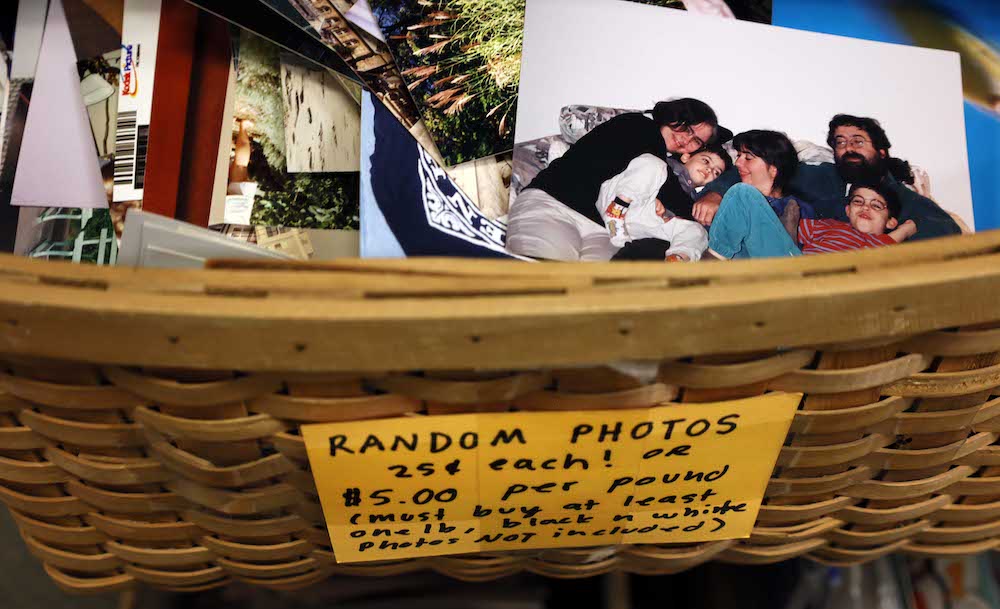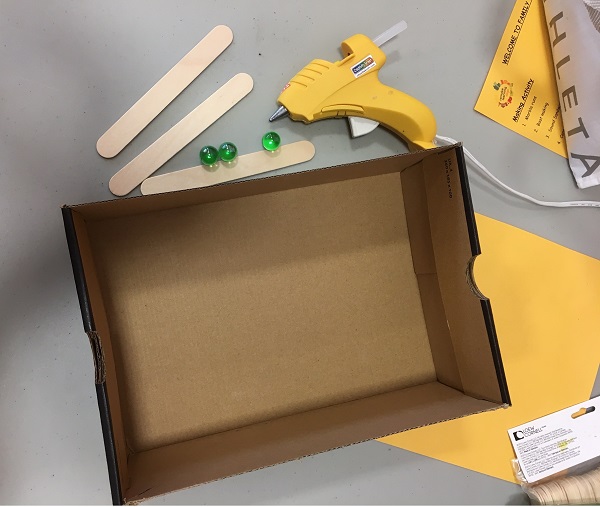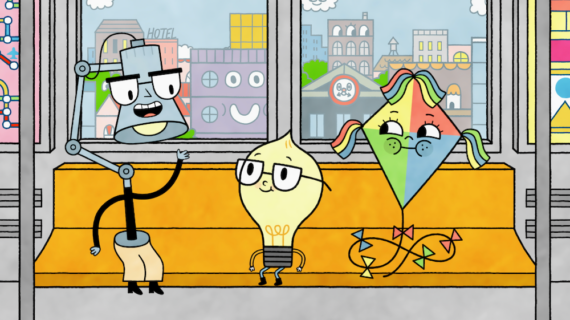
The Pittsburgh Center for Creative Reuse: Where old objects meet new possibilities
All photos by Ted Anthony.
Walk into the Pittsburgh Center for Creative Reuse. Look around. Take it all in. If you’re a parent looking for project ideas for your child, don’t be surprised if you find yourself overwhelmed and delighted at the same time.
To your right: aisles that include vintage photographic equipment, slides and baskets full of old family photos that evoke Pittsburgh moments from the 1970s, 1980s and 1990s. To your left: an old library card catalog (remember those?) with labeled drawers full of tiny things awaiting new lives. Among them: little plastic people, “metal bits,” “fake coins,” “ear plugs” and “patriotic.”
Just ahead, the sprawling room reveals its creative bounty, from barrels of old wine corks to stacks of old VHS tapes, from shelves of scholastic athletic trophies to a bin of small plastic figures labeled “business women.” We’ll stop there, because any attempt to catalog this nirvana of stuff would inevitably fail.
The nonprofit, donation-supported Center, which sits at the confluence of Wilkinsburg, Homewood and Point Breeze, calls itself a “non-traditional art supply shop.” But in using that term, it sells itself short. This place is a time machine, a community garage sale, a thrift store, a meditation on sustainability and an incubator for creativity — all rolled into one and tucked behind the Construction Junction salvage warehouse.
For Greater Pittsburgh’s parents and children, it’s a launchpad for all manner of exciting projects.
“We focus on the things that are not commonly seen as reusable. We’re bringing reuse back to those materials that have infinite possibilities, especially in the creative realm, and especially for the kids,” says Ash Andrews, the center’s executive director and its highly persuasive evangelist-in-chief.
Kids come in here often — with parents and on field trips. (The presence of young people is evident from some of the signs: “Merchandise placed in anyone’s mouth must be purchased.”) Invariably, the kids are captivated by something. It’s hard not to be. Whether you’re a child or an adult, the odds are overwhelming that you’ll find something compelling in the mix.
“We get the kids hyped about the physicality of the materials,” Andrews says. “And then from there, as we’re starting to work on more one-on-one, hands-on projects with them, we can start to insert some of those higher level ideas like, `Where do you think this came from? Do you have anything like this in your home? Have you ever seen one of these before?’ … And then we can start to make those connections between their own lives.”
In essence, the center is a marvelous purgatory — a waystation where things that have lived previous lives come to wait for their next ones. These are items from the landscape of Pittsburgh’s households and offices, ready to become something new. The possibilities, with a bit of kinetic creativity added, are virtually endless.
Kidsburgh sat down recently with Andrews to talk about some of those possibilities. But how to break down so many of them? By project? By item? In the end, we chose to do it by age group. So here are some ideas for kids of certain ages as they wander the aisles of the center and explore their creative instincts.
“That is the fun of it — that mysterious element to the art-making and the craft-making that comes out of reuse,” Andrews says. “You just don’t know … what you’re going to spark and where it’s going to go. And that’s really valuable.”

(The following sections have been edited and condensed for clarity.)
TODDLERS: IMAGINE THE FUTURE
THE PREMISE: Put a variety of random stuff — safe stuff, of course — in front of younger kids that will spark their imaginations. Let them go from there. The stuff could be specific, or it could simply be abstract shapes and pieces. With this age group, it’s the process and the playing that matter.
ANDREWS’ TAKE: “I would probably collect a menagerie of cool, interesting, buildable parts from our bulk section. I might pick up some fabric samples, some tactile materials that inspire the kids to think beyond the material itself and ask what it could it be in their imagination. Maybe there’s a prompt, like “What do you or your family or your house kind of look like? What about in 200 years? And imagine it using these old materials.” Oftentimes, these things are coming from the 70s, 80s, 90s, maybe beyond that. Using objects of the past to imagine the future is kind of beautiful.”
AGES 4 TO 8: BUILD A COLLAGE
THE PREMISE: Spark inspiration by giving kids a bunch of different things from different places and see how they cut them up and put them back together in new ways.
ANDREWS’ TAKE: “A collage is really fun and just an intrinsically creative reuse sort of thing. We would be using materials in that collage that they probably would not be finding in a typical collage class elsewhere. They would be using calendars from, say, the year 1971. We’ve got a whole calendar collection there. They might be using tip sheets from the design industry that have paint samples on them to cut up. They might be using magazines, they might be using quilting magazines from the 90s to see some old fashions that really aren’t all that old but sure look dated by now.”
AGES 8 TO 12: MAKE UNEXPECTED WEARABLE THINGS
THE PREMISE: Kids of this age love to make things they can put on, and that can be done either from expected materials or unorthodox ones. The center has all kinds of things that can be used to make fashions or even assemble jewelry.
ANDREWS’ TAKE: “I feel like 8 to 12 is like prime time for wearables. Kids love to wear stuff, they feel pride in the things that they make. They want to wear that thing around. You can really use these raw materials here for so many wild kinds of items to put on your head. There’s also jewelry — found material, jewelry for all genders absolutely, necklaces and earrings, bracelets, all the things. But maybe what happens, if you don’t use any traditional jewelry-making supplies and you challenge yourself to only reuse different objects, you can get some really wild designs and ones that just would not happen if you were using a premade kit.”
AGES 12 AND UP: INVESTIGATE THE PREMISES
THE PREMISE: Set them free in the center and help them encounter objects that they’ve never seen or used before — and in doing so, get their faces away from their devices.
ANDREWS’ TAKE: “There is something so incredibly interesting and attractive to kids of that age with these tactile materials. They don’t always know what they are, so there is an investigative process that happens when we have field trips with teenagers come through. They all start out on their phones like 100%. Then you will start to see this transformation happen with these folks. An enchantment almost happens when they start to realize that they don’t know what they’re looking at — or that they’re looking at something outside of the context that they have ever seen it before. Especially looking through the old vintage items. They might put their phone away, or they might start using their phone to document what’s happening. But they get into it. I don’t think we’ve ever had a field trip here where folks look bored.”
Pittsburgh Center for Creative Reuse
214 N. Lexington St., Pittsburgh, PA 15208
412-473-0100
Want more maker learning fun? Check out Kidsburgh’s Guide to Maker Learning and explore our weekly Maker Monday projects.



























